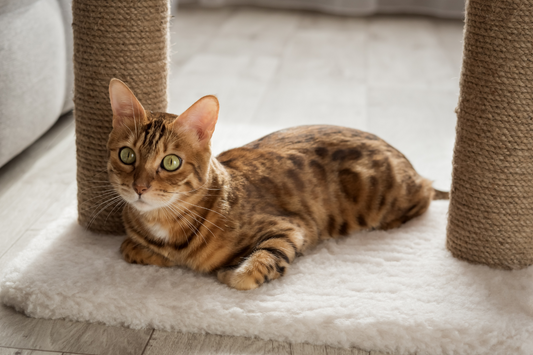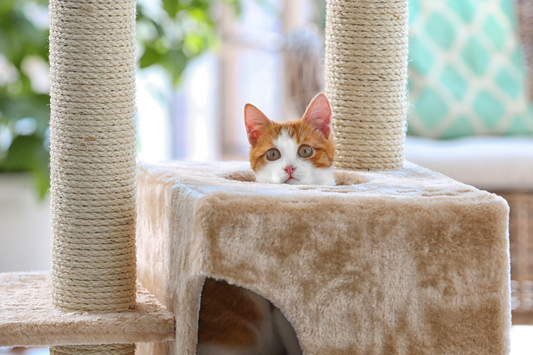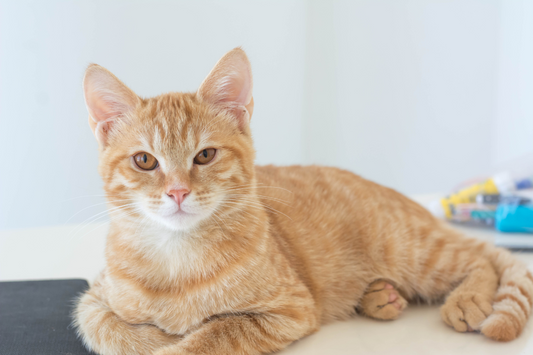
You bought the perfect-looking scratching post—sturdy, stylish, covered in sisal or carpet—and yet your cat gives it a sniff, maybe a swat, then walks away. Frustrating, right? You’re not alone. Many cat owners invest in scratchers only to find their feline friends uninterested. But before you write it off as feline fickleness, it’s worth understanding the deeper reasons why cats ignore certain scratchers and how a few simple adjustments can make all the difference.
Why Do Some Cats Ignore Scratchers?
Scratching is a natural and essential feline behavior. It helps cats stretch, maintain claw health, mark territory, and relieve stress. If your cat is ignoring a scratcher, one of the following may be to blame:
1. Unappealing texture – The material may not feel satisfying under your cat’s paws.
2. Poor placement – Hidden or low-traffic locations reduce visibility and interest.
3. Wrong angle – A scratcher that doesn’t match your cat’s preferred posture can be a turn off.
4. Negative experiences – A single bad moment near the scratcher can lead to long-term avoidance.
5.Lack of variety – If you have multiple cats or just one picky feline, offering one generic option may not cut it.
Identifying the specific cause can guide your next steps in adjusting the scratcher setup.
The Texture, Material, and Angle Equation
When it comes to scratchers, one size doesn’t fit all. Cats develop strong preferences for how a scratcher feels, whether it's sisal rope, cardboard, carpet, or even bare wood. If the texture doesn’t satisfy, your cat will find alternatives—usually your furniture.
Orientation matters, too. Some cats prefer to stretch upward on tall vertical posts, while others love dragging their claws along the floor on horizontal pads. Angled options provide an in-between solution. Observing how your cat scratches naturally—like on carpet edges or door frames—can help you select the right combination of material and shape.
Placement Mistakes and Household Dynamics
Even the best-designed scratcher won’t get used if it’s in the wrong spot. Cats scratch to mark territory, especially in places where they spend a lot of time or interact with people. That means the placement of the scratcher is just as important as its design.
Avoid tucking it away in a corner or spare room. Instead, place scratchers in high-traffic areas, near windows, or by your cat’s favorite nap spots. In multi-cat homes, each cat may need its own designated scratcher to prevent conflict. Cats often avoid shared resources if there's tension, so spreading scratchers across different rooms can help reduce friction and increase usage.
How to Make Scratchers More Appealing
If your cat still isn’t showing interest, try adding fun and familiarity to the scratcher:
1. Sprinkle dried catnip or use a catnip spray to attract their attention.
2. Attach a toy to create movement and play opportunities.\
3. Rub treats or their scent onto the surface to build a positive association.
4. Try silvervine or valerian root if your cat doesn’t respond to catnip.
5. Use positive reinforcement – reward your cat with treats or praise every time they scratch appropriately.
These enhancements help your cat connect the scratcher with fun, comfort, and reward making it more likely to become a regular part of their routine.
Final Thoughts: Matching the Scratcher to the Cat
Cats aren’t being difficult—they’re communicating their needs. A scratcher that seems perfect to you might not feel, smell, or sit right to them. But with a little trial and error, you can find a scratcher that suits your cat’s preferences and behavior patterns.
Start by observing where and how your cat likes to scratch, then experiment with materials and placements. Add scent, stimulation, and rewards to create a positive experience. The goal is to provide a scratching outlet that not only saves your furniture but also supports your cat’s physical and emotional well-being.
In the end, a well-used scratcher is more than a pet product—it’s a tool that strengthens the bond between you and your cat, one happy claw mark at a time.











